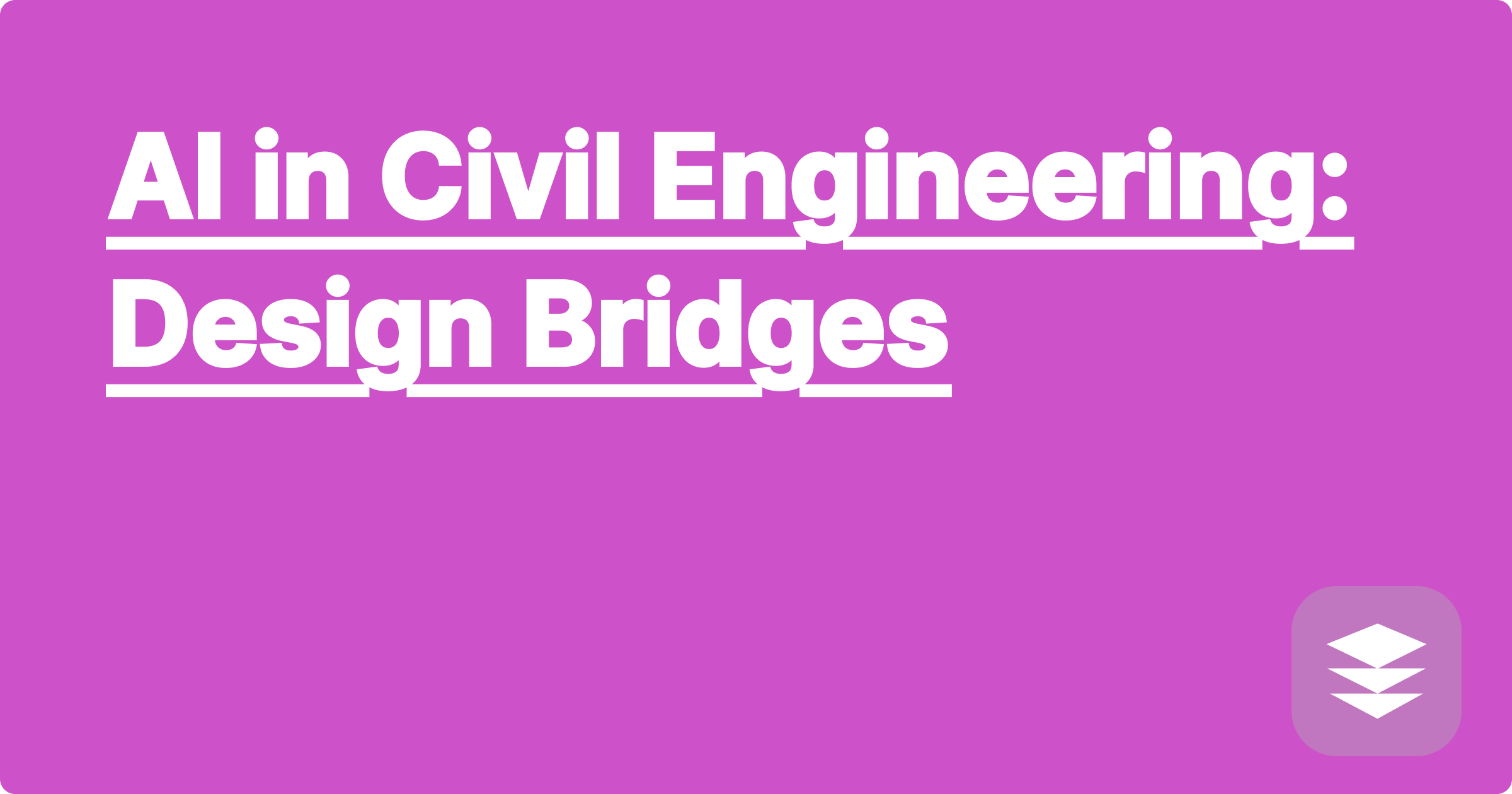
The world of civil engineering is undergoing a dramatic transformation, fueled by the rapid advancements in artificial intelligence. Designing bridges, once a painstakingly manual process, is now being revolutionized by AI, offering unprecedented levels of efficiency, safety, and innovation. For STEM students and researchers, mastering these AI-driven tools is no longer optional, but a necessity for staying competitive and contributing meaningfully to the field. This blog post explores how AI is reshaping bridge design, offering practical advice and highlighting some less-common yet powerful AI tools that can significantly boost your academic and research endeavors.
As a STEM student, imagine having a personalized AI partner guiding you through complex coursework, research projects, and even career planning. This isn't science fiction; it's the power of a Generalized Personal AI (GPAI). A GPAI can be conceptualized as an evolving, personalized AI assistant that learns your strengths, weaknesses, and goals, providing tailored support in every aspect of your academic journey. Think of it as a supercharged study buddy and research assistant rolled into one. Throughout this post, we'll explore how a GPAI can be your secret weapon for academic success.
Designing a bridge involves a complex interplay of factors, including structural integrity, material properties, environmental conditions, and cost considerations. Traditionally, engineers relied heavily on manual calculations, simulations, and physical models, a time-consuming and often iterative process. Predicting the behavior of a bridge under various loads, accounting for material fatigue, and optimizing the design for cost-effectiveness are just some of the challenges engineers face. Furthermore, the increasing complexity of modern bridge designs, incorporating innovative materials and architectural considerations, demands even more sophisticated analysis and simulation techniques.
AI offers a powerful toolkit for tackling these challenges head-on. AI algorithms can analyze vast datasets of historical bridge designs, material properties, and environmental data to identify patterns and optimize design parameters. Machine learning models can predict structural behavior with greater accuracy and speed than traditional methods, enabling engineers to explore a wider range of design options and identify potential weaknesses early in the process. Tools like ChatGPT can be leveraged for brainstorming design concepts, generating reports, and even translating technical documents. Furthermore, AI-powered generative design tools can automatically generate optimized bridge designs based on specified constraints and objectives, dramatically accelerating the design process.
Integrating AI into your bridge design workflow can begin with leveraging a GPAI. First, define your project goals and constraints, such as the bridge's span, load capacity, and material limitations. Then, use your GPAI to research relevant literature, gather data on material properties, and explore existing bridge designs. Next, utilize AI-powered structural analysis tools, such as Karamba3D, a parametric structural engineering tool that integrates seamlessly with Grasshopper, to simulate the behavior of your design under various loads. Refine your design iteratively based on the AI-generated feedback. Finally, use your GPAI to generate comprehensive reports and presentations summarizing your design process and findings.
Imagine designing a pedestrian bridge across a river. Using a tool like Rhino and its Grasshopper plugin, combined with Karamba3D and an AI-powered optimization algorithm like Galapagos, you can input the bridge's span, desired aesthetic qualities, and material constraints. The AI can then generate and evaluate thousands of design iterations, optimizing for structural efficiency and minimizing material usage. Another example is using AI to predict the long-term performance of a bridge under varying environmental conditions. By feeding historical weather data and material degradation rates into a machine learning model, you can predict potential maintenance needs and optimize the bridge's lifespan.
While ChatGPT and Stable Diffusion are valuable tools, exploring less-common AI tools can unlock even greater potential. Consider using OpenAI's Codex for generating code for structural analysis, streamlining your workflow and reducing the risk of human error. DeepCode, now part of Snyk, can analyze your code for potential bugs and vulnerabilities, ensuring the safety and reliability of your designs. For material selection, explore Citrination, a platform that leverages AI to predict material properties and suggest optimal materials based on your design requirements.
Start by defining clear learning and research goals. Your GPAI can help you break down complex tasks into manageable steps and prioritize your efforts effectively. Use your GPAI to curate personalized learning resources, summarizing complex technical concepts and providing targeted practice questions. Don't be afraid to experiment with different AI tools and find the ones that best suit your learning style and research needs. Document your progress and track the impact of AI on your academic performance. Share your findings with your peers and contribute to the growing community of AI-powered learners and researchers.
To conclude, AI is not just a futuristic concept; it's a powerful tool that is already transforming the landscape of civil engineering, particularly in bridge design. By embracing these AI-driven tools and developing a strategic approach to incorporating them into your workflow, you can gain a significant edge in your academic and research pursuits. Start exploring these tools today, and unlock the potential of AI to revolutionize your approach to bridge design and beyond. Don't hesitate to connect with your GPAI and begin exploring the exciting possibilities of AI-powered learning and research.
AI in Chem Eng: Optimize Lab Processes
AI for Calculus: Instant Problem Solving
AI Biology Tutor: Ace Your Exams
AI for Robotics: Design & Simulate
AI for Stats: Analyze Data Easily
AI in Computer Science: Learn to Code
AI for Materials Science: Discover
AI for Linear Algebra: Solve Equations